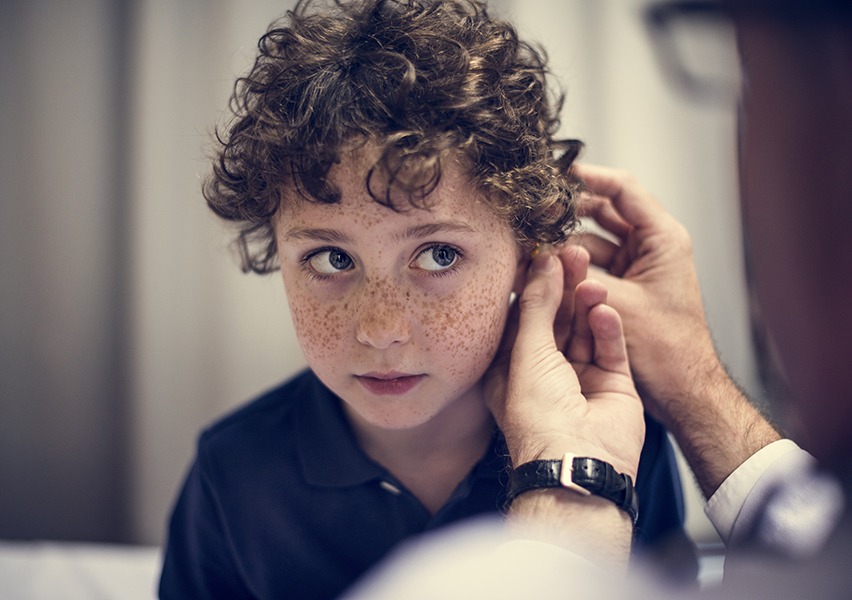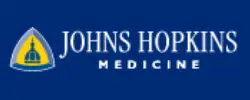Introduction
The world of audiology encompasses a vast spectrum of conditions, each with its unique characteristics and complexities. One such condition, Otosclerosis, is primarily known as a disorder of the middle ear, affecting bone growth and causing progressive hearing loss. While it commonly manifests in adults, pediatric cases are also reported, albeit less frequently. Yet, these cases present unique challenges and implications, particularly concerning diagnosis, management, and the psychosocial impacts of the disease.
For the unacquainted, Otosclerosis primarily involves an abnormal growth of bone in the middle ear, leading to progressive hearing loss. The disease can significantly impact the patient’s quality of life and, in children, it can have profound effects on their learning and developmental milestones. However, with early diagnosis and effective management, it’s possible to mitigate these effects and provide children with a path to a successful future.
Our journey through this comprehensive guide will navigate the labyrinth of Otosclerosis in young individuals, bringing to light the significant aspects and considerations to be made for parents, educators, and healthcare professionals alike. Armed with this knowledge, we hope to provide a foundation of understanding and assistance that will be instrumental in overcoming the hurdles that this condition presents.
In the paragraphs to follow, we will dissect the complexities of diagnosing and managing Otosclerosis in young people, delve into the impacts of the condition on children’s learning and development, and provide an actionable guide for parents and caretakers supporting teens living with Otosclerosis. We will also bring to attention the unique challenges faced in cases of pediatric Otosclerosis and learn from real-world case studies to better understand early onset Otosclerosis.
Diagnosing and Managing Otosclerosis in Young People
While Otosclerosis typically surfaces in adulthood, its diagnosis in young people is a critical aspect that necessitates particular attention. Diagnosing Otosclerosis in children is no simple feat, as the condition can often mimic symptoms of other common ear disorders. Furthermore, the patient’s inability to communicate their symptoms effectively adds an extra layer of complexity to the process.
Medical professionals rely on a combination of audiometric testing, tympanometry, and computed tomography (CT) scans for an accurate diagnosis. Early detection and intervention can significantly improve outcomes for children with Otosclerosis. With that said, navigating the treatment landscape also requires a nuanced approach.
Managing Otosclerosis in young people involves a dynamic combination of hearing aids, drug therapy, and, in some cases, surgical intervention. The decision to opt for surgery, such as stapedotomy, is often dependent on the severity of the hearing loss and the child’s overall health condition. It is also vital that medical professionals and parents collaborate closely to ensure a comprehensive management plan is in place that prioritizes the child’s wellbeing.
The success of such management strategies often hinges on regular monitoring and modifications as per the child’s individual progress. With this intricate dance of diagnostic and management practices, it’s possible to provide the child with a path to success despite the challenges posed by Otosclerosis.
Impacts of Otosclerosis on Children’s Learning and Development
Weaving the web of Otosclerosis’ impact on children’s learning and development demands a multifaceted approach. The sphere of learning and development is vast and the repercussions of hearing loss associated with Otosclerosis are equally extensive.
It’s well established that hearing is integral to a child’s development of language skills and communication abilities. Consequently, Otosclerosis can hinder their academic performance and social interactions, creating a cascade of challenges that extend beyond the physical realm.
For instance, in a classroom setting, children with Otosclerosis may struggle to follow instructions, engage in group discussions, or even grasp new concepts. This can lead to feelings of frustration, alienation, and lowered self-esteem.
However, it’s not all doom and gloom. By understanding these potential impacts, parents, educators, and healthcare professionals can collaborate to create an effective support system. Tailored learning strategies, hearing aids, speech therapy, and a nurturing environment can go a long way in mitigating these effects and empowering the child to reach their full potential.
Supporting Teens Living with Otosclerosis: A Guide for Parents
Navigating adolescence can be a challenging task in itself, and the addition of a condition like Otosclerosis can compound the hurdles teens face. However, with the right guidance, parents can significantly improve their teen’s quality of life and equip them with the tools to face their unique challenges head-on.
The cornerstone of supporting a teen living with Otosclerosis lies in fostering open communication. It’s crucial to listen to their concerns, acknowledge their feelings, and provide reassurances to alleviate any fears or anxieties. Educating them about the condition, the available treatments, and the possible lifestyle adaptations can also empower them with the knowledge to manage their condition independently.
While managing Otosclerosis, it’s essential not to overlook the psychosocial aspects. Incorporating counseling services, support groups, and even individual therapy can provide a much-needed outlet for the emotional and psychological challenges that may arise. Encouraging regular participation in social activities can also help in fostering a sense of normalcy and promoting positive self-esteem.
Bluetooth Hearing Aids for Seniors Rechargeable
Introducing our game-changing Bluetooth Hearing Aids for Seniors Rechargeable. Say goodbye to the frustrations of hearing loss and embrace a new world of crystal-clear sound and effortless connectivity.
Experience the freedom and convenience of wireless technology with these cutting-edge hearing aids. With their Bluetooth capabilities, you can easily connect to your favorite devices, such as smartphones or tablets, and stream music, phone calls, and even TV audio directly to your ears. No more tangled wires or limitations.
Designed with seniors in mind, these rechargeable hearing aids offer a comfortable and discreet fit. They are crafted to seamlessly blend into your lifestyle, ensuring you can wear them all day without discomfort. Plus, with their rechargeable feature, you can say goodbye to constantly buying and changing batteries. Simply recharge overnight and enjoy a full day of clear, amplified sound.
But the true magic lies in the enhanced sound quality provided by these hearing aids. Experience the joy of hearing conversations, music, and the world around you with incredible clarity. With advanced noise reduction technology and customizable settings, you can tailor your listening experience to your specific needs.
Don’t let hearing loss hold you back. Embrace the future of hearing technology with our Bluetooth Hearing Aids for Seniors Rechargeable. Rediscover the sounds you love and reconnect with the world around you. Say yes to effortless connectivity, exceptional comfort, and unmatched sound quality. Invest in your hearing and enhance your quality of life today.
Understanding the Unique Challenges of Pediatric Otosclerosis
When Otosclerosis manifests in children, it brings with it a set of unique challenges. In addition to the complexities in diagnosis and management, there’s an added emphasis on mitigating the condition’s impact on a child’s formative years.
One of the primary challenges stems from the nature of the disease itself. The progressive hearing loss associated with Otosclerosis can not only hinder a child’s learning and development but also their overall wellbeing. For instance, kids with Otosclerosis might find it challenging to form and maintain friendships or engage in activities they once enjoyed.
Moreover, the potential need for surgical intervention can be a significant source of stress and anxiety for both the child and their family. Despite the promising success rates, surgery carries an inherent risk, and its potential side effects can be daunting.
However, despite these challenges, with a comprehensive approach to management and a supportive network, children with Otosclerosis can lead fulfilling lives and overcome many of these hurdles.
Early Onset Otosclerosis: Case Studies and Insights
Analysing case studies can provide valuable insights into the complexities and the trajectory of early onset Otosclerosis. One such study involves a seven-year-old girl diagnosed with bilateral Otosclerosis. Despite her initial struggles with speech and language development and academic performance, with timely intervention, the child was able to significantly improve her communication skills and catch up with her peers at school.
Another case involves a teenage boy who experienced progressive hearing loss due to Otosclerosis. Though initially withdrawn and struggling academically, with the aid of hearing aids, surgical intervention, and psychosocial support, he was able to regain his confidence and improve his academic standing.
These cases underscore the importance of early diagnosis and effective management in mitigating the effects of Otosclerosis. They also highlight the vital role of psychosocial support in helping children with Otosclerosis lead successful and fulfilling lives.
As we reach the end of our exploration into pediatric Otosclerosis, it’s clear that while the condition poses significant challenges, with the right knowledge and resources, these hurdles can be surmounted. Diagnosis, treatment, and coping strategies are just a few pieces of the puzzle. But perhaps, the most crucial piece lies in the relentless spirit of those living with Otosclerosis and their unwavering will to overcome.
Conclusion
Throughout this journey into the world of pediatric Otosclerosis, we’ve explored the various intricacies surrounding the condition. We’ve delved into the complex process of diagnosing Otosclerosis in young people and the delicate balance required in managing the condition. We’ve highlighted the impacts of Otosclerosis on children’s learning and development, and how a collaborative approach can mitigate these effects.
We’ve also explored how parents can provide valuable support to teens living with Otosclerosis. From fostering open communication to facilitating psychosocial support, we’ve looked at the different ways in which parents can empower their teens to live confidently with their condition.
We’ve also shed light on the unique challenges of pediatric Otosclerosis and how a comprehensive management approach can help children lead fulfilling lives despite these hurdles. Through case studies, we’ve seen the tangible impact of early diagnosis and effective management, providing a beacon of hope for those dealing with this condition.
While Otosclerosis can undeniably pose significant challenges, it’s crucial to remember that with the right knowledge, resources, and support, those affected can lead successful, fulfilling lives. By increasing our understanding of pediatric Otosclerosis, we can help shape a better future for those dealing with this condition.

Walking in Their Shoes: A Closer Look at the Lives of Seniors with Otosclerosis
Introduction Otosclerosis, a hearing condition that primarily affects the bones in the

Unveiling Otosclerosis: Understanding Its Impact and Navigating Life
Introduction Imagine the orchestra of life gradually tuning down until the world






